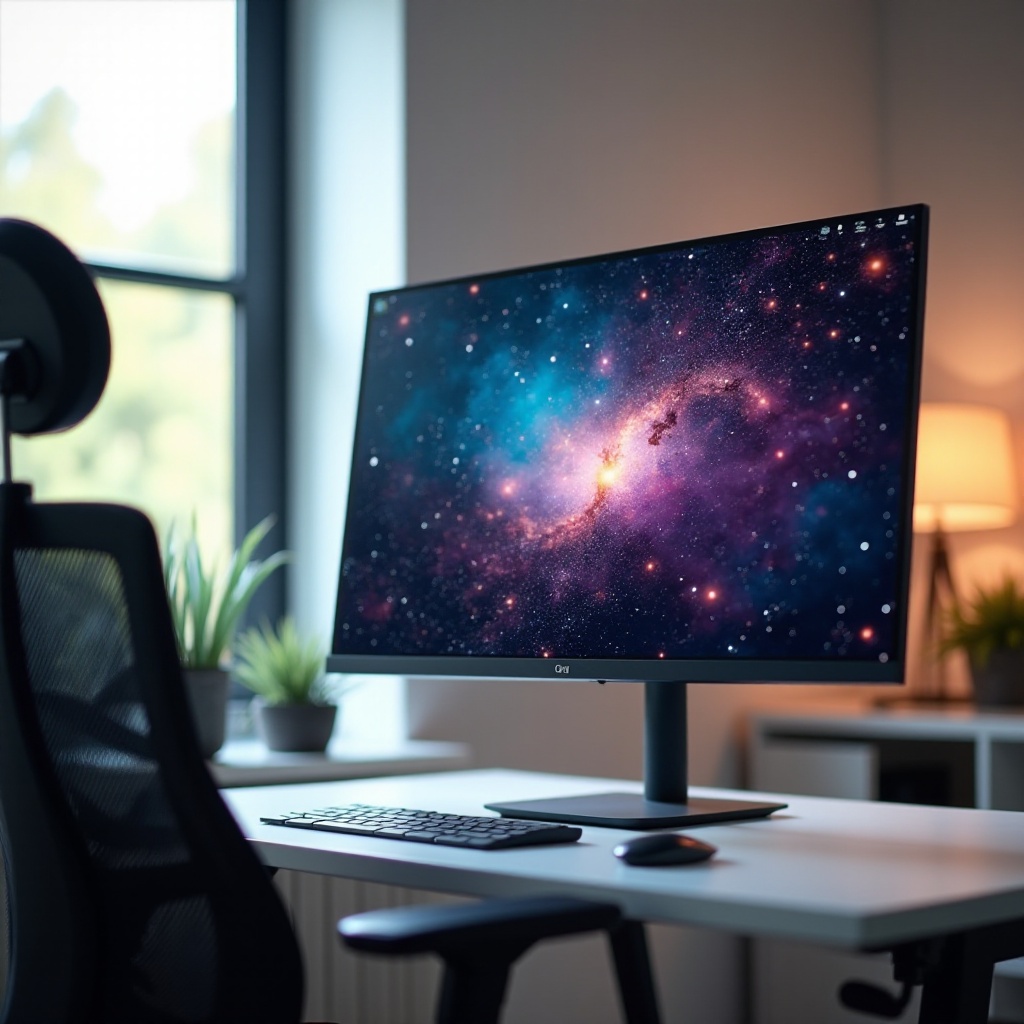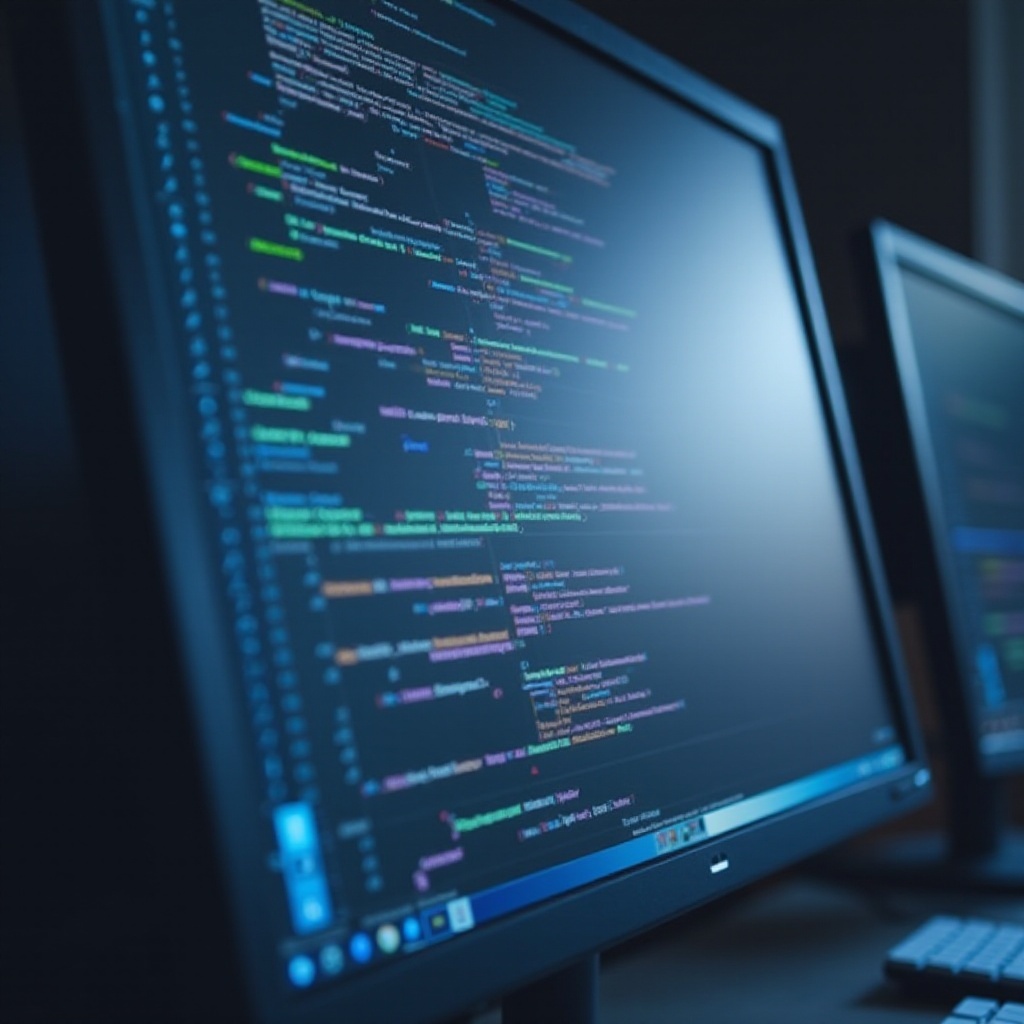Introduction
Ensuring your monitor has optimal sharpness is essential for an enjoyable and productive experience, whether you’re working, gaming, or watching videos. Crisp display quality enhances visual clarity, reduces eye strain, and boosts overall efficiency. This guide will walk you through understanding and optimizing your monitor’s sharpness to achieve the best possible display.

Understanding Monitor Sharpness
Monitor sharpness refers to the clarity of images and text displayed on your screen. This clarity depends on various factors, such as resolution, pixel density, and display technology. Understanding how each of these elements contributes to overall sharpness can help you make informed decisions when setting up or purchasing a monitor.
Resolution is the number of pixels displayed on the screen, usually denoted as width x height (e.g., 1920 x 1080). Higher resolution typically results in sharper images because more pixels contribute to forming the picture. Pixel density, measured in pixels per inch (PPI), determines how closely packed the pixels are. Higher PPI means more pixels in a given area, which contributes to greater sharpness, particularly on smaller screens.
Key Factors Affecting Monitor Sharpness
Several key factors influence a monitor’s sharpness, making it critical to consider each one when aiming for optimal display quality.
Resolution and Screen Size
Resolution and screen size are interconnected. A high resolution on a small screen yields a very sharp image due to the high pixel density. For instance, a 27-inch monitor with a 4K resolution (3840 x 2160) will be much sharper than a 27-inch monitor with a Full HD resolution (1920 x 1080). When choosing a monitor, balance the resolution and screen size to ensure you get the sharpest possible image without compromising on screen real estate.
Pixel Density (PPI)
Pixel density, or PPI, is a crucial factor in monitor sharpness. Higher PPI means more pixels per inch, resulting in a crisper and clearer image. For example, a smartphone typically has a higher PPI compared to a laptop, providing a sharper image. When selecting a monitor, look for models with higher PPI for the best sharpness, especially if you work with detailed graphics or text.
Display Technology
Different display technologies offer varying levels of sharpness. Common types include LCD, LED, and OLED. OLED displays typically provide the highest sharpness due to their ability to control each pixel individually, resulting in better contrast and detail. However, LCD and LED monitors with high resolution can also deliver sharp images. It’s essential to select a display technology that aligns with your specific needs and budget.

How to Set Up Your Monitor for Optimal Sharpness
Once you’ve selected the ideal monitor, setting it up correctly is crucial to maximize its sharpness. Simple adjustments and calibrations can significantly enhance your viewing experience.
Adjusting Display Settings
- Resolution: Ensure your monitor is set to its native resolution via the display settings. This step guarantees the sharpest possible image.
- Brightness and Contrast: Adjust these settings for clear and distinct images without causing eye strain.
- Sharpness Control: Some monitors have a sharpness control setting. Fine-tune this option to enhance image clarity without over-sharpening, which can lead to a halo effect.
Calibrating with Built-In Tools
Most modern monitors come with built-in calibration tools. Use these tools to adjust the color, contrast, and sharpness settings. Manufacturers often include software to guide you through this process, ensuring that you get the best performance from your monitor.
Utilizing Software Calibration
Third-party calibration software can provide more precision than built-in tools. Programs like DisplayCAL and X-Rite are excellent for fine-tuning your monitor’s settings to professional standards. Follow the software’s step-by-step guide to adjust color accuracy, contrast, and brightness, ensuring ultimate sharpness and clarity.
Troubleshooting Common Sharpness Issues
Even with optimal setup, you might encounter sharpness issues. Knowing how to troubleshoot these problems can help you maintain a sharp display.
Fixing Blurry Text and Images
- Update Drivers: Ensure your graphics drivers are up to date.
- ClearType Text Tuner: In Windows, use the ClearType Text Tuner for sharper text.
- Font Smoothing: Mac users can enable font smoothing in system preferences for improved text clarity.
Addressing Inconsistent Sharpness
Inconsistent sharpness might occur due to poor cable connections or damaged cables. Always use high-quality HDMI, DisplayPort, or DVI cables. Check and secure all connections to ensure consistent signal transmission.
Managing Different Input Sources
Different devices can have varying output resolutions. Make sure each device is set to the monitor’s native resolution for the best sharpness. Switch to high-performance input ports where possible to maintain clarity.

Advanced Tips for Professionals
For professionals requiring high sharpness, such as designers and gamers, consider these advanced tips.
Calibration for Designers and Gamers
Designers benefit from monitors with high color accuracy and sharpness. Calibration tools can ensure precise colors and lines. Gamers should look for high refresh rates and response times to complement sharp visuals, reducing motion blur.
Handling Multi-Monitor Setups
Maintaining uniform sharpness across multiple monitors involves matching resolution and brightness settings. Using identical models can simplify this process, ensuring seamless transitions between screens.
Investing in Calibration Hardware
Professionals might consider hardware calibration devices like the SpyderX Pro. These tools offer the highest accuracy, providing a perfect balance of color, brightness, and sharpness for professional-grade displays.
Conclusion
Achieving optimal sharpness on your monitor enhances your viewing experience, reduces eye strain, and boosts productivity. By understanding factors like resolution, pixel density, and display technology, and following proper setup and troubleshooting steps, you can ensure your monitor always delivers the sharpest possible image.
Frequently Asked Questions
What is the best resolution for optimal sharpness in monitors?
The best resolution depends on screen size. For typical monitor sizes, 4K resolution usually offers optimal sharpness, especially on screens 27 inches or larger.
How often should I calibrate my monitor for the best sharpness?
Calibrate your monitor every few months or whenever you notice a decline in display quality. Regular calibration ensures consistent sharpness and color accuracy.
Are there any specific calibration tools you recommend?
For software calibration, DisplayCAL is excellent. For hardware calibration, the SpyderX Pro is highly recommended for its precision and reliability.